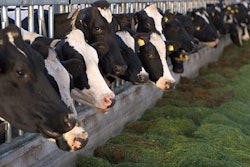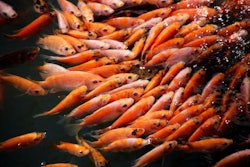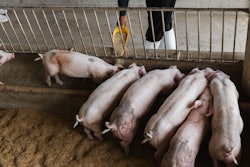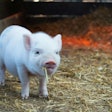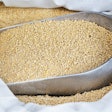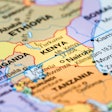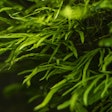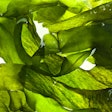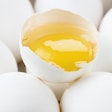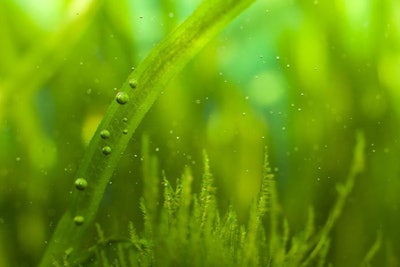
Seaweeds such as kelp offer climate-friendly solutions for animal nutrition, among other applications, according to a new multinational research project.
In the field of animal nutrition, seaweeds offer great potential to replace soybeans and soy oil, according to a report from SINTEF. Working with research partners, the Norway-based independent research organization has published a report on seaweed farming that is stimulating the industrialization of seaweed production. The report came after a four-year multinational project known as MACROSEA.
Among the key findings of the project is that Norway offers suitable conditions for the commercial cultivation of seaweeds (macroalgae).
According Silje Forbord of SINTEF, the seaweeds could make a significant contribution to the protein requirements of human and animal populations. Furthermore, the seaweeds provide other basic constituents that can be used in a wide array of applications from clothing and furniture to packaging materials and biodegradable bottles.
Wide-ranging study on potential for seaweed cultivation in Norway
These are the conclusion of the group after a series of studies on cultivation conditions, fouling and the genetics of the brown algae sugar kelp (Saccharina latissima). Furthermore, the much-coveted red alga Palmaria (also known as red dulse) was cultivated in Norway for the first time, using nets at sea. Algal growth models were also developed to study how seaweed production is affected by different growing conditions.
Results from the MACROSEA project revealed that seaweed farming has the potential to become a major new industry in Norway.
“Currently, it is mainly only the cultivation of seaweeds for food that is profitable,” said Aleksander Handå, research manager at SINTEF Ocean AS. “However, the development of new technologies for large-scale biomass production may change this.”
Industrial production of seaweed in Norway may then become part of the solution in the coming decades, he said, as world demand grows for animal feeds and renewable raw materials.
Positive environmental impacts: carbon capture
Crucially, the MACROSEA project revealed that macroalgae can lock up the greenhouse gas carbon dioxide (CO2).
Through photosynthesis, seaweeds to convert CO2 into carbohydrates and oxygen. As a result, the CO2 concentration in the surface water is in balance with that in the atmosphere. Binding the CO2 in the water in this way, the greenhouse gas is captured from the atmosphere.
As the leaves flake off during the growing season, they descend to the seabed. Here, they become a potential feed source for organisms living at depth. Those that are not consumed continue to bind the CO2, according to Handå. When the algae are harvested, overall CO2 emissions are further reduced when they provide raw materials to replace those derived from fossil fuels.
For Norway, a realistic estimate for a seaweed harvest is 20 million metric tons (mmt). This can bind about 4 mmt of CO2, according to Handå.
“The industrial scale production of macroalgae may prove to be a major contributor to innovative and climate-friendly solutions, a green transition and the movement towards a low-emissions society, thus helping us to meet the targets set by the Paris Agreement,” he said.
Reducing salmon industry’s reliance on wild fish
For the salmon industry, algal products represent a potential to reduce the amount of wild-caught fish that is fed to the fish in the form of fish meal.
“From 20 mmt of seaweed, we can extract 100,000 mmt of protein, said Silje Forbord of SINTEF. “This corresponds to one-third of the mass of soy protein that Norway currently imports annually for salmon feed.”
In 2019, one U.K. grocery retailer was urging the aquaculture industry to use more sustainable alternatives to fish oil, such as algal oil in aquafeeds. As part of its sustainability program, the company said it was urging its salmon suppliers to reduce their reliance on wild fish stocks for feed ingredients.
Funded by the Research Council of Norway, MACROSEA ran from 2016-19. As well as SINTEF, partners in the project were the Norwegian University of Science and Technology, Akvaplan-Niva, NIVA and the universities of Bergen, Oslo and Tromsø. International research partners included Clarkson University, Aarhus University, SAMS and IOCAS, while Austevoll Seaweed Farm, Biokraft, Folla Alger, Hortimare, Ocean Forest, PE Reefs, Seaweed and Seaweed Energy Solutions.
Global seaweed culture
Global macroalgal culture amounts to more than 30 mmt, according to SINTEF. In its latest report for 2017, the United Nations’ Food and Agriculture Organization (FAO) put the figure at 31.8 mmt, valued at US$11.8 billion.
Commercial cultivation of seaweeds is largely confined to Asia. With output of 17.53 mmt, China leads the world rankings in terms of output, followed by Indonesia with 9.75 mmt. South Korea and the Philippines each produce 1.5-2 mmt. In the same year, Norway’s output of aquatic plants was 149 metric tons (mt).
The MACROSEA project highlights that the country has plenty of untapped potential to increase production. Norwegian fjords and coasts have the potential to produce an average of approximately 70 mt of macroalgae per hectare (31.2 U.S. tons per acre). Under favorable conditions, harvests could be twice the average. Mid-Norway alone — a sea area of 4,000 square kilometers—could produce 20 mmt (fresh weight) of seaweeds, which would yield 2 mmt of dried raw materials.
If seaweeds can be cultivated offshore, away from the coast, the potential in Norway may be even greater, according to the MACROSEA researchers.
Algal products in animal nutrition
In 2019, the European Commission set up a similar initiative to MACROSEA. Tasked with the acceleration of the development of sustainable low-trophic aquaculture (including seaweeds) around the Atlantic Ocean, the AquaVitae Consortium involved 36 partners, including the University of New England of the U.S.
U.S.-based Veramaris began worldwide distribution of its algae-based fish oil alternative last year. First shipment of the company’s omega-rich algal oil product left for Norway in July. Using fermentation processes, the new plant produces oils rich in omega-3 fatty acids from marine algae. The use of algal oils helps cut the reliance of the aquafeed sector on the capture of wild fish.
Researchers at University of California Davis have been investigating feeding seaweed to dairy cattle. In the study, small amounts of seaweed were added to cattle feed to reduce methane emissions.
This year, feed companies were experiencing an acute shortage for protein ingredients in Norway. As a result, the national food safety agency made an exemption to allow the incorporation of fishmeal into feed formulations for poultry and pigs.

